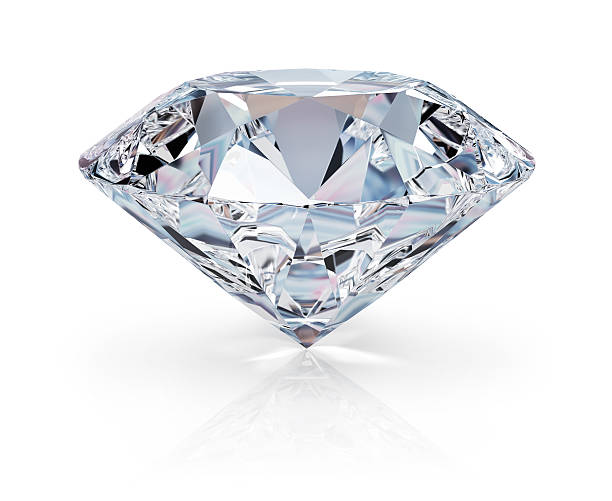How much do you know about diamonds? We could bet that it’s not too much. Most people just admire them. Knowing that we’re talking about one of the world’s strongest and most precious materials is enough for the majority of us. But there is so much to learn and know about this precious natural gem. You might not be thinking like that now, but what if, for example, you need to buy an engagement ring in the not-so-distant future? That changes the way you think about diamonds, right?
Knowing your way around diamonds is essential. As we said, it might not be like that in the present, but you never know what the future holds. Most of us will be buying this precious gem sooner or later. If you’re already on the clock to buy a diamond you can visit this site, but if you’re in for a lesson or two about diamonds you should stick with us at least for a little bit. There is so much left to understand about these rocks that you’re not even aware of. It is not only about the size.
Yes, size matters. Of course, that big rock is going to attract more attention than a smaller piece. But, is that all? Is there something more to the science of diamonds? You can bet that it’s not. For one, there’s the main issue of a cut. Yes, the way a precious rock is cut adds to its worth. Last but not least, we are going to discuss their quality. Everything we already said above makes a combination that says a few things about the quality of a real diamond, but it’s also a category of its own. Now that we have your attention, let’s delve together into the shiny world of the world’s most precious rocks – diamonds.
Carats and Diamond Size
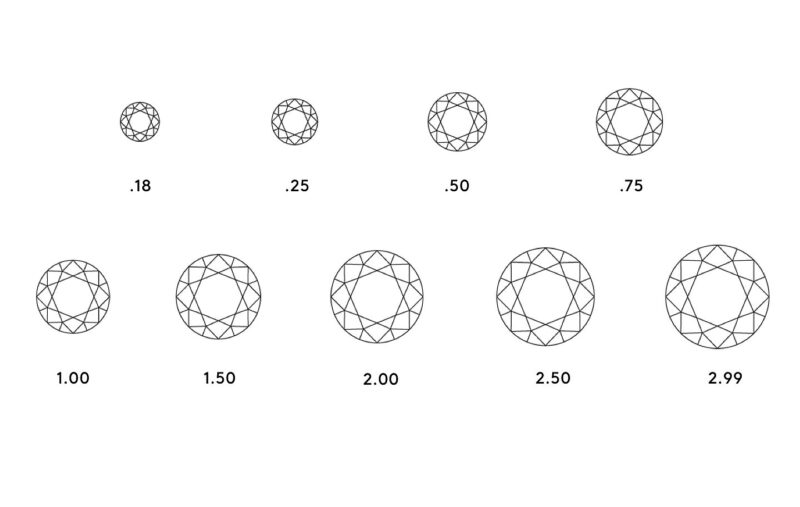
Let’s start with the size first. Here, people often have a misunderstanding. Carat is not a measurement for the size of a diamond. We are talking about two different things. Size is all about quantity. How big a rock is when you take a look at it from above. Carat, on the other side, is related to its weight. To make this easier to understand, we’re talking about grams. One carat equals 0.2 grams. So, if you want a rock that weighs one gram, you’ll receive five carats.
Size, on the other hand, is measured in millimeters. While size and carat don’t go hand in hand you can get them to bode well. Usually, a diamond that weighs one carat has a size of 6.5 millimeters. What this means is that it’s possible to determine how big a rock is based on the carat, and the other way around. Now that we have this lesson behind us, we should move to the 4Cs of the universe of diamonds. That is where their true value lies.
4Cs of Diamonds
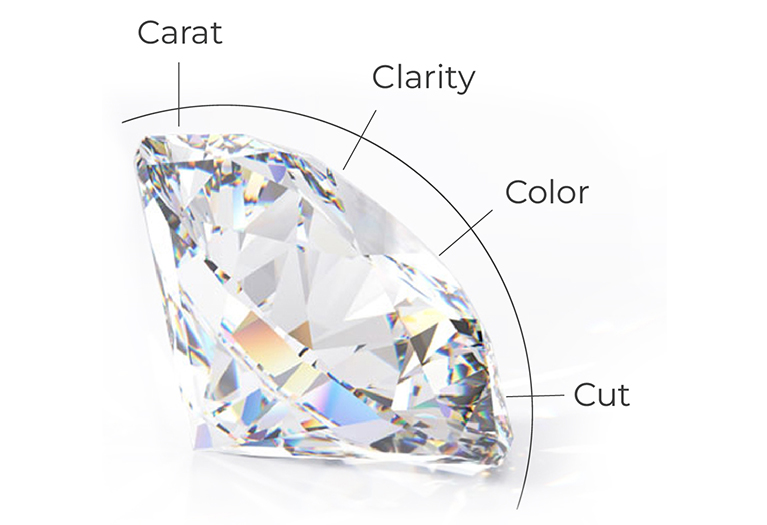
The moment you get even remotely interested in diamonds you’re going to encounter the famed 4Cs. As any gemologist will tell you we are talking about clarity, cut, color, and the weight of a diamond – carat. We already covered the last one, so all that is left to talk about are clarity, cut, and color. Let’s start with color.
Color
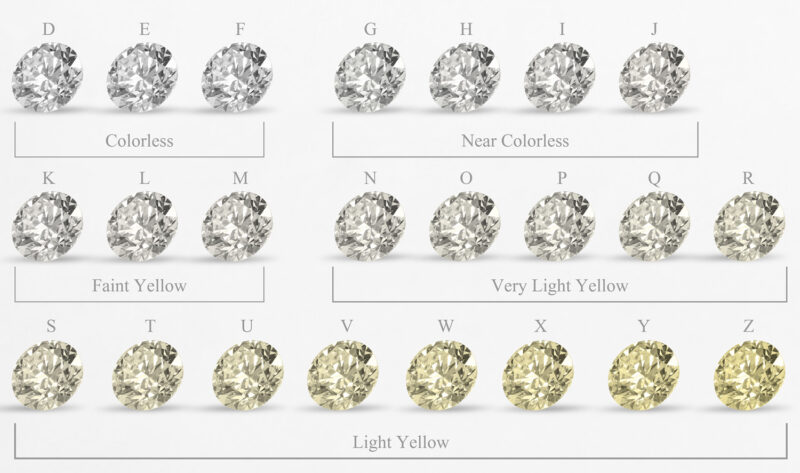
One of the primary things that make it more or less valuable is the color of the rock. It can gravely affect its price and change the stone you want to buy. What you want about a genuine diamond is to have as little color as possible. Two identical diamonds that have slight color differences can be priced very differently. So, do you get the picture? Colorless diamonds hold the most value. The reason is simple – they’re rare. It’s the industry’s standard.
Other diamonds can come in many shades including brown, yellow, and pink. Experts at the Gemological Institute of America have formed a scale that is used all over the world as a measurement of diamonds’ color. They examine each rock under UV lights to determine its true color. For an untrained eye, almost every diamond would appear to be colorless. This is why it’s important that some of them have color and that it affects their price gravely.
Cut and Clarity
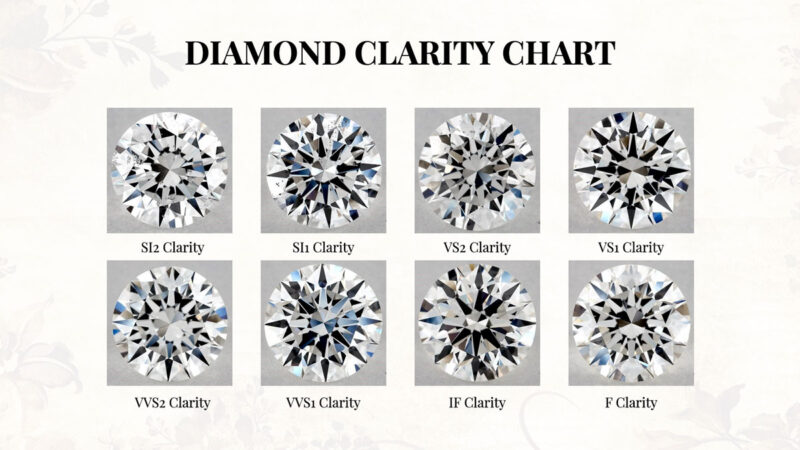
In the same manner, there exists a scale for color, there is one for cut. All precious rocks are graded by this parameter and the scale can be quite harsh for some rocks. At the bottom of the scale are poor and fair-cut pieces. They do not belong to the highest echelon of quality and they’re almost lacking the brilliance that makes these rocks so valuable in the first place. The light escapes these two groups with ease which is a sign of low quality.
The middle of the pack is reserved for good and very good-graded ones. They have a fair amount of fire and brilliance which elevates their value. With good grades, everything is at a lower scale but they still offer value for money. At the top of the pyramid are the excellent ones which are state of art diamonds that are deemed almost flawless.
This is a measurement that can erase some of the flaw’s others might bring to the table. Even a poor-quality diamond in terms of color and size can appear fine if it’s cut the right way. With the right symmetry and proper polish, they can take your breath away with ease.
Bottom Line
As you can see, diamonds are not just some simple shiny rocks. You’re far off. So, the next time you’re in need to buy one, you should remember this guide. It is not easy to make the right choice in the department of gem-buying. The knowledge you got here today could also be used to impress your prettier half. Furthermore, you can be of assistance to friends and family once you get acquainted with the true value of diamonds. Considering that all of us will get in touch with them sooner or later, knowing a thing or two can help you make the right decision. Knowledge is often the difference between a smart buy and a rush decision.

